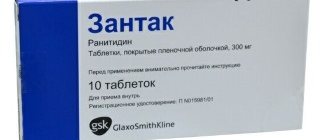Write a review
Reviews: 0
Manufacturers: St. Petersburg NIIVS
Active ingredients
- Bacteriophage coli
Disease class
- Local infection of skin and subcutaneous tissue, unspecified
- Enterotoxigenic infection caused by Escherichia coli
- Enteroinvasive infection caused by Escherichia coli
- Enterohemorrhagic infection caused by Escherihia coli
- Other intestinal infections caused by Escherichia coli
- Echerichia coli [E.coli] as a cause of diseases classified elsewhere
- Other inflammatory diseases of the vagina and vulva
Clinical and pharmacological group
- Not indicated. See instructions
Pharmacological action
- Immunostimulating
- Keloidolytic (anti-scar)
Pharmacological group
- Vaccines, serums, phages and toxoids
- Enzymes and antienzymes
Indications for use
Collalysin is prescribed for the treatment and prevention of the following conditions:
- Secondary cataract;
- Symblepharon;
- Retinal scars;
- Scar changes in the skin of the eyelids (keloid scars);
- Cloudiness of the cornea and vitreous body;
- Strictures of the lacrimal ducts (nasolacrimal duct and lacrimal canaliculi);
- Conjunctival scars after burns;
- Plastic iridocyclitis (when inflammatory phenomena subside);
- Hemophthalmos (hemorrhage into the vitreous) caused by trauma, which occupies more than 1/2 of the volume of the vitreous and within 3 days after its formation;
- Cicatricial changes in the skin (cutaneous application).
Directions for use and dosage
Collalysin is used conjunctivally, using phonophoresis or electrophoresis directly into the lesion (scar, commissure, vitreous body, etc.). Cutaneous use of the drug is also possible.
Before starting to use Collalysin, the contents of the bottle should be dissolved in water for injection or solution (isotonic sodium chloride solution or 0.5% novocaine solution).
Before starting therapy, the patient’s sensitivity to the action of the drug should be checked by injecting 1 CU of Collalysin under the conjunctiva of the affected eye and observing the reaction for 48 hours. If there is no allergic reaction, therapy is carried out.
When treating cicatricial changes in the skin, before starting to use the drug, skin tests are carried out with the application of a solution for 1-2 days in therapeutic doses.
Pharmacotherapeutic group:
Proteolytic agent.
ATX code:D03BA03
Pharmacological properties
Collalysin® selectively acts on collagen (the main component of connective tissue), causing its destruction.
The introduction of Collalysin® in small doses into the tissue of the burned vault of the eye, starting from 15 days after the burn, leads to either a slowdown in the formation of scar tissue between the burned surfaces (eyelid and eyeball), or to the prevention of the development of narrow symblepharon.
When keloid tissue is exposed to aqueous solutions of Collalysin®, a lytic effect occurs, the degree of which depends on the exposure time.
Indications for use
Collalysin® is used as a means of prevention and treatment of symblepharon, cicatricial changes in the skin of the eyelids (keloid scars), conjunctiva of the eyeball after a burn, with strictures of the lacrimal ducts (lacrimal ducts and nasolacrimal duct), corneal opacities, plastic iridocyclitis (in the stage of subsiding inflammatory phenomena), secondary cataracts, opacification of the vitreous body, retinal scars, with traumatic hemorrhage into the vitreous body, occupying more than ½ of its volume and within 3 days after the formation of hemophthalmos.
Contraindications
The use of Collalysin® is contraindicated in case of unfinished process of epithelization of the cornea after a burn, combination of symblepharon with a corneal ulcer, presence of defects in the sclera, hemorrhage into the vitreous body less than V% of its volume, presence of signs of blood coagulation in the vitreous body, a pronounced reaction after administration of 1 KE, with pregnancy, lactation, childhood under 18 years of age.
Directions for use and doses
Immediately before using Collalizin®, the contents of the ampoule are dissolved in 0.5% novocaine solution, 0.9% sodium chloride solution for injection or water for injection.
The drug is administered subconjunctivally, directly into the lesion (adhesion, scar, vitreous body, etc.) using electrophoresis, phonophoresis, and is also used cutaneously.
Before using Collalysin®, the patient’s sensitivity to the drug is checked, for which 1 KE is injected under the conjunctiva of the diseased eye and observed for 48 hours. In the absence of an allergic reaction, treatment is carried out. When using the drug cutaneously, its skin tolerance is checked by performing skin tests with the application of a Collalysin® solution in therapeutic doses for 24 and 48 hours.
- To prevent post-burn symblepharon, Collalysin® is administered 10 KE in a 0.5% solution of novocaine into the tissue of the burned fornix after complete epithelization of the cornea. Repeated administration is carried out after 2-3 days (after the reactive phenomena to the previous injection have subsided). The course of treatment is 2-3 weeks, the total dose is 60-70 KE, the number of injections is 5-7.
- For the treatment of symblepharon, keloid and other eyelid scars, Collalysin® is injected into the commissure between the eyelid and the eyeball (immediately under the conjunctiva) or into the thickness of the scar in doses that cause limited necrosis - 100 KE in a 0.5% novocaine solution. The procedure is performed under careful visual control using a binocular loupe. A repeated injection is made 2-5 days after the reactive phenomena subside. To lyse the adhesions between the eyelid and the eyeball, 3 injections are sufficient. The total dose is 300 KE, the duration of treatment is 3 weeks.
- Treatment of narrowing of the lacrimal ducts (tear canaliculi, nasolacrimal canal) is carried out by washing with a solution of Collalysin® (daily or every other day) 50 KE in 2 ml of 0.5% novocaine solution. The course of treatment is 7-10 procedures, repeated treatment is possible after 2-3 weeks.
- Treatment of corneal opacities, plastic iridocyclitis (posterior synechiae) and secondary cataracts is carried out using one of the following methods: Electrophoresis. Collalysin® from solution (50 KU with 10 ml of water for injection) is injected into the eye from the positive pole, electric current up to 1 mA, procedure duration up to 10 minutes. The course of treatment is 10 procedures, the course can be repeated after 2-3 weeks.
- Phonophoresis. Collalysin® in a dose of 50 KE (in 10 ml of water for injection) is injected into the eye using the “IUT 0.88 - 4 - 2” sensor of the “Ultrasound T - 5” apparatus. Intensity 0.2 W/cm, procedure duration 5 minutes. The course consists of 10 procedures, can be repeated after 2-3 weeks.
- Electro-phonophoresis (combination of two techniques). Against the background of phonophoresis, electrophoresis is activated. The duration of the procedures is as in points “a” and “6m. The course of treatment can be repeated after 2-3 weeks.
- Subconjunctival injection. Collalysin® is administered daily or every other day under the conjunctiva of the eyeball in a dose of 10 ICE in 0.2 ml of 0.5% novocaine solution. The course of treatment is 7-10 injections, the total dose is 70-100 KE. A repeat course is carried out after 2-3 weeks.
To prevent the occurrence of scar formations in patients after excision of keloid scars with an increased tendency to excessive proliferation of connective tissue (treatment begins in the postoperative period after complete healing of the wound or epithelization of the wound surface), as well as for the treatment of hypertrophic scars, fresh growing keloid scars, for formed scars no more than a year old, the drug is recommended to be used by electrophoresis. Aqueous solutions of Collalysin® are injected from the positive electrode for 20 minutes at a current of 0.03-0.1 mA per cm2. For a course of treatment no more than 15 procedures every other day. A total of 2-3 courses of treatment are carried out at intervals of 2 months. The dose of Collalysin® for electrophoresis is selected taking into account the size, stage of development of the scar and its clinical manifestations. For the treatment of hypertrophic scars, Collalysin® is prescribed at 500-1000 KE, dissolved in 10 ml of water for injection with a total dose of 22500-45000 KE. For fresh growing keloid scars, with formed scars more than a year old, as well as after excision of keloid scars in people with an increased tendency to excessive proliferation of connective tissue, the drug is prescribed at 1000-2000 KE in 10 ml of water for injection in a total dose of 45,000-90,000 KE ( for 3 courses of treatment).
Side effects
When using Collalysin®, the formation of corneal ulcers and an allergic reaction is possible. To prevent these phenomena, it is recommended to begin treatment only after corneal epithelization has completed and a negative test for sensitivity to Collalysin® has been obtained.
If a corneal ulcer appears, the drug is immediately discontinued and antibacterial drugs and agents that stimulate epithelization are prescribed.
In case of allergic reactions, the use of the drug is stopped and antiallergic treatment is carried out.
Overdose
There are no data on drug overdose.
Release form
Lyophilisate for the preparation of a solution for local and parenteral use in ampoules of 100, 200, 300, 400, 500, 600, 700, 800, 900 and 1000 KE. 10 ampoules of the drug, instructions for use of the drug, an ampoule knife or an ampoule scarifier in a cardboard pack.
Storage conditions
List B. In a dry place, protected from light, at a temperature of 4°C to 8°C.
Best before date
2 years. Do not use after the expiration date.
Conditions for dispensing from pharmacies
The drug is dispensed according to a doctor's prescription.
Manufacturing company
Federal State Unitary Enterprise "St. Petersburg Research Institute of Vaccines and Serums and Enterprise for the Production of Bacterial Preparations" of the Federal Medical and Biological Agency.
Consumer complaints should be sent to:
198320, St. Petersburg, Krasnoe Selo, st. Svobody, 52.
special instructions
To prevent the development of side effects, therapy should be started only after the end of epithelization of the cornea and confirmation of a negative test result for sensitivity to the drug.
If a corneal ulcer occurs, Collalizin is immediately discontinued, after which antibacterial drugs and drugs that stimulate epithelization are prescribed (1% solution of morphine hydrochloride with 1% solution of quinine, methyluracil).
In cases of allergic reactions, the use of the drug should be stopped, after which antiallergic therapy should be carried out: local instillation of corticosteroids, cold, antihistamines (suprastin or diphenhydramine), calcium supplements.
Similar drugs:
- Lydase Substance
- Ronidase Powder for external use
- Lydase-M Aerosol
- Contractubex Gel for external use
- Lydase Lyophilisate for the preparation of solution for injection and topical use
** The Drug Directory is intended for informational purposes only. For more complete information, please refer to the manufacturer's instructions. Do not self-medicate; Before starting to use the drug Collalysin, you should consult a doctor. EUROLAB is not responsible for the consequences caused by the use of information posted on the portal. Any information on the site does not replace medical advice and cannot serve as a guarantee of the positive effect of the drug.
Are you interested in the drug Collalysin? Do you want to know more detailed information or do you need a doctor's examination? Or do you need an inspection? You can make an appointment with a doctor - the Euro lab is always at your service! The best doctors will examine you, advise you, provide the necessary assistance and make a diagnosis. You can also call a doctor at home . Euro lab clinic is open for you around the clock.
** Attention! The information presented in this medication guide is intended for medical professionals and should not be used as a basis for self-medication. The description of the drug Collalysin is provided for informational purposes and is not intended for prescribing treatment without the participation of a doctor. Patients need to consult a specialist!
If you are interested in any other drugs and medications, their descriptions and instructions for use, information about the composition and form of release, indications for use and side effects, methods of use, prices and reviews of drugs, or you have any other questions and suggestions - write to us, we will definitely try to help you.



